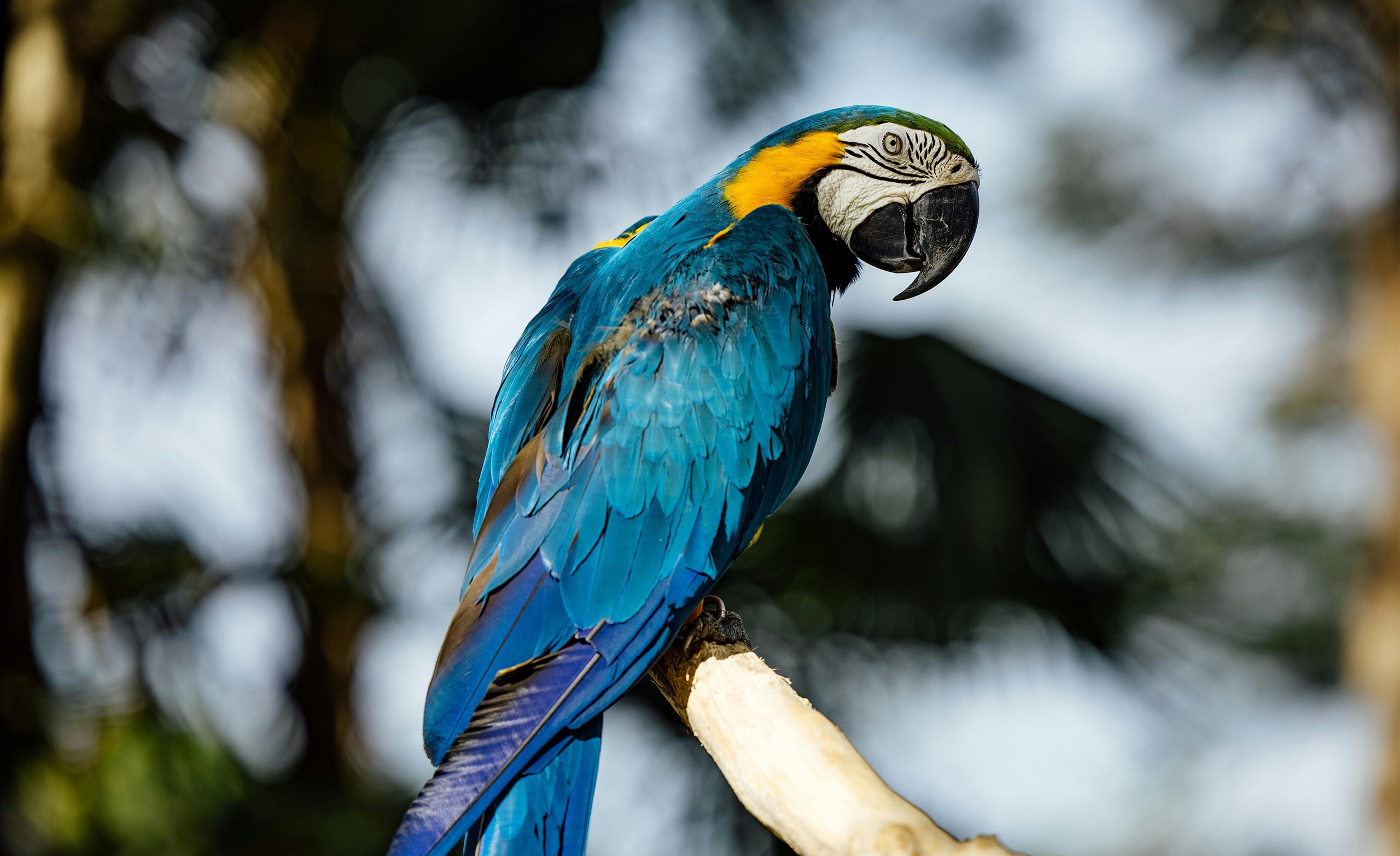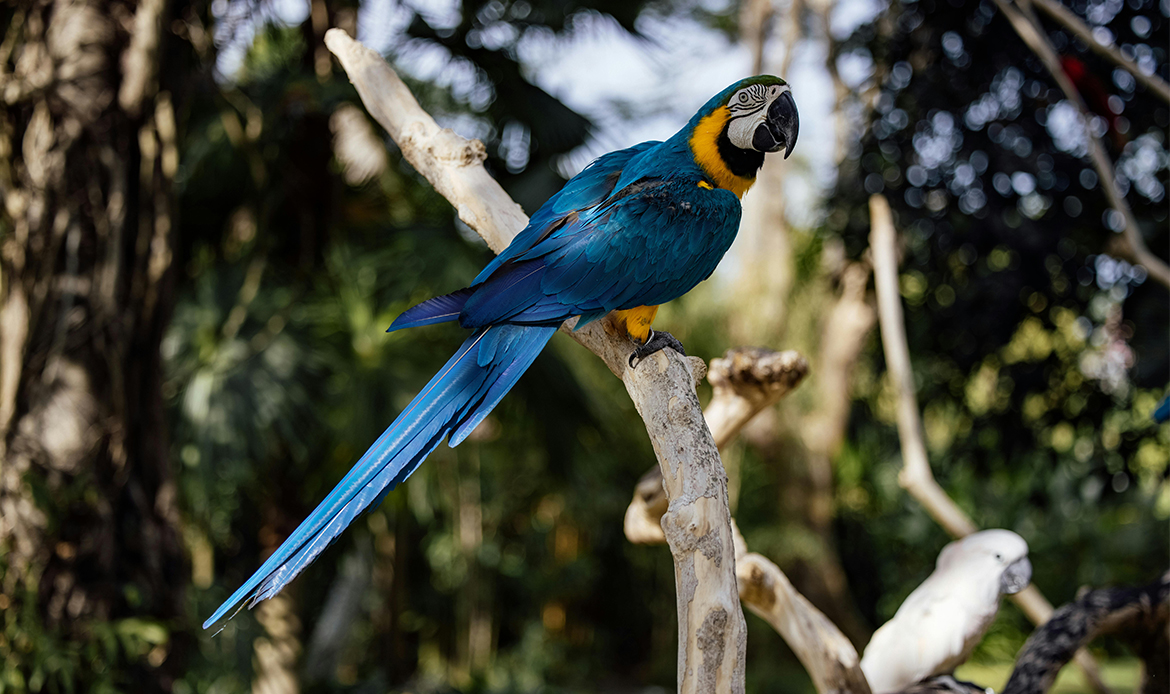
Bright Feathers, Fragile Future: Protecting the Spix’s Macaw
The Spix’s Macaw, also known as the Little Blue Macaw, is a symbol of both beauty and fragility in the avian world.
With its striking blue feathers and endearing personality, this bird has captured the hearts of many.
However, the Spix’s Macaw faces a precarious future, teetering on the brink of extinction.
This blog explores the challenges and efforts involved in protecting this magnificent species.
The Enigmatic Spix’s Macaw
The Spix’s Macaw (Cyanopsitta spixii) is a medium-sized parrot native to Brazil.
It is renowned for its vibrant blue plumage, which makes it one of the most visually stunning birds in the world.
The species was first described in the early 19th century by German naturalist Johann Baptist von Spix, after whom it is named.
Habitat and Lifestyle
The natural habitat of the Spix’s Macaw is the riparian Caraibeira woodland galleries in the Caatinga dry forest of northeastern Brazil.
This unique ecosystem is characterized by its seasonal variations, with lush greenery during the rainy season and a stark, arid landscape during the dry months.
The macaws depend heavily on the Caraibeira trees for nesting and feeding, making them highly vulnerable to habitat destruction.
The Threats to Spix’s Macaw
The Spix’s Macaw has faced numerous threats over the years, leading to its extinction in the wild. The primary threats include:
- Habitat Destruction: Deforestation for agriculture and livestock grazing has significantly reduced the macaw’s natural habitat.
- Illegal Pet Trade: The striking appearance of the Spix’s Macaw has made it a target for poachers, who capture and sell these birds in the illegal pet trade.
- Predation and Competition: Natural predators and competition for nesting sites with other bird species have also contributed to the decline of the Spix’s Macaw.

Conservation Efforts
Despite these challenges, there have been significant efforts to save the Spix’s Macaw from extinction. Conservationists have implemented various strategies to protect and restore the population of this endangered species.
- Captive Breeding Programs: One of the most successful conservation strategies has been captive breeding.
Organizations like the Association for the Conservation of Threatened Parrots (ACTP) have been instrumental in breeding Spix’s Macaws in captivity and preparing them for reintroduction into the wild. - Reintroduction Programs: In June 2022, a milestone was achieved when 52 Spix’s Macaws were reintroduced into their natural habitat in Brazil.
This reintroduction program aims to establish a self-sustaining population in the wild. - Habitat Restoration: Efforts are underway to restore the Caatinga ecosystem by planting native trees and protecting existing habitats from further destruction.
- Legal Protection: The Spix’s Macaw is listed on CITES Appendix I, which prohibits international trade of the species except for legitimate conservation, scientific, or educational purposes.
The Role of Technology in Conservation
Modern technology has played a crucial role in the conservation of the Spix’s Macaw.
Satellite tracking, for instance, allows conservationists to monitor the movements and behavior of reintroduced birds, ensuring their safety and well-being.
Additionally, genetic research helps in maintaining genetic diversity within the captive population, which is vital for the long-term survival of the species.
Community Involvement
Local communities play a vital role in the conservation of the Spix’s Macaw.
Education and awareness programs have been implemented to inform residents about the importance of protecting this species and its habitat.
By involving local communities in conservation efforts, there is a greater chance of success in preserving the Spix’s Macaw for future generations.
The Future of Spix’s Macaw
The future of the Spix’s Macaw remains uncertain, but there is hope.
The successful reintroduction of these birds into the wild is a testament to the dedication and hard work of conservationists around the world.
However, continued efforts are needed to ensure the survival of this species.
Conclusion
The Spix’s Macaw is a symbol of both the beauty and fragility of our natural world.
Protecting this species requires a multifaceted approach, involving habitat restoration, captive breeding, legal protection, and community involvement.
By working together, we can ensure that the bright feathers of the Spix’s Macaw continue to grace our skies for generations to come.
